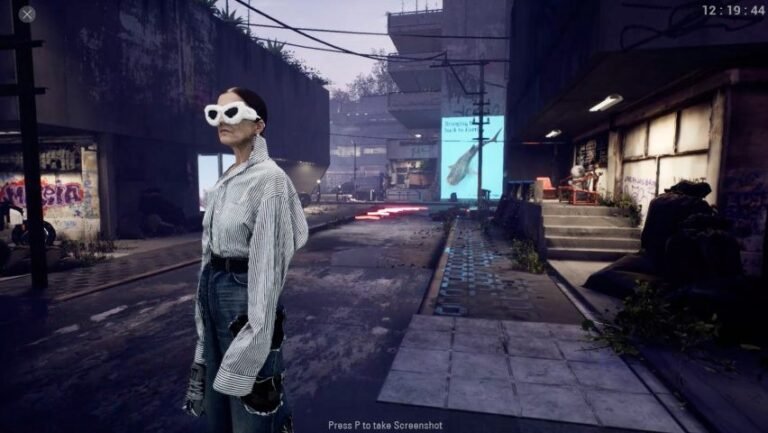Underused park at the foot of Detroit’s transformed Michigan Station is getting a $6 million makeover
It’s finally happening. Following a string of visionary revamp schemes over the years that all failed to achieve liftoff, Detroit’s historic Roosevelt Park is at long last being treated to a proper makeover. The city broke ground on the $6 million renovation project earlier this week at the scruffy and seldom-used expanse of green space located at the foot of Michigan Central Station. Similar to other transformative projects launched by the city in recent months, the park refresh is financed in part—$5 million to be exact—by funds from the American Rescue Plan Act. The remaining $1 million for the rehab project comes from the city’s general fund.
Slated to reopen in spring 2023, the 9.5-acre park will emerge from its overhaul with reimagined landscaping, new public amenities, and a larger footprint of 13 acres thanks to the removal of Vernor Road, which currently bisects the park. As part of the renovation, the city will reroute the road around the park as a means of creating a “safer, more community-friendly public space” for residents, workers, and visitors in the area, according to a press release from the Detroit Mayor’s Office.
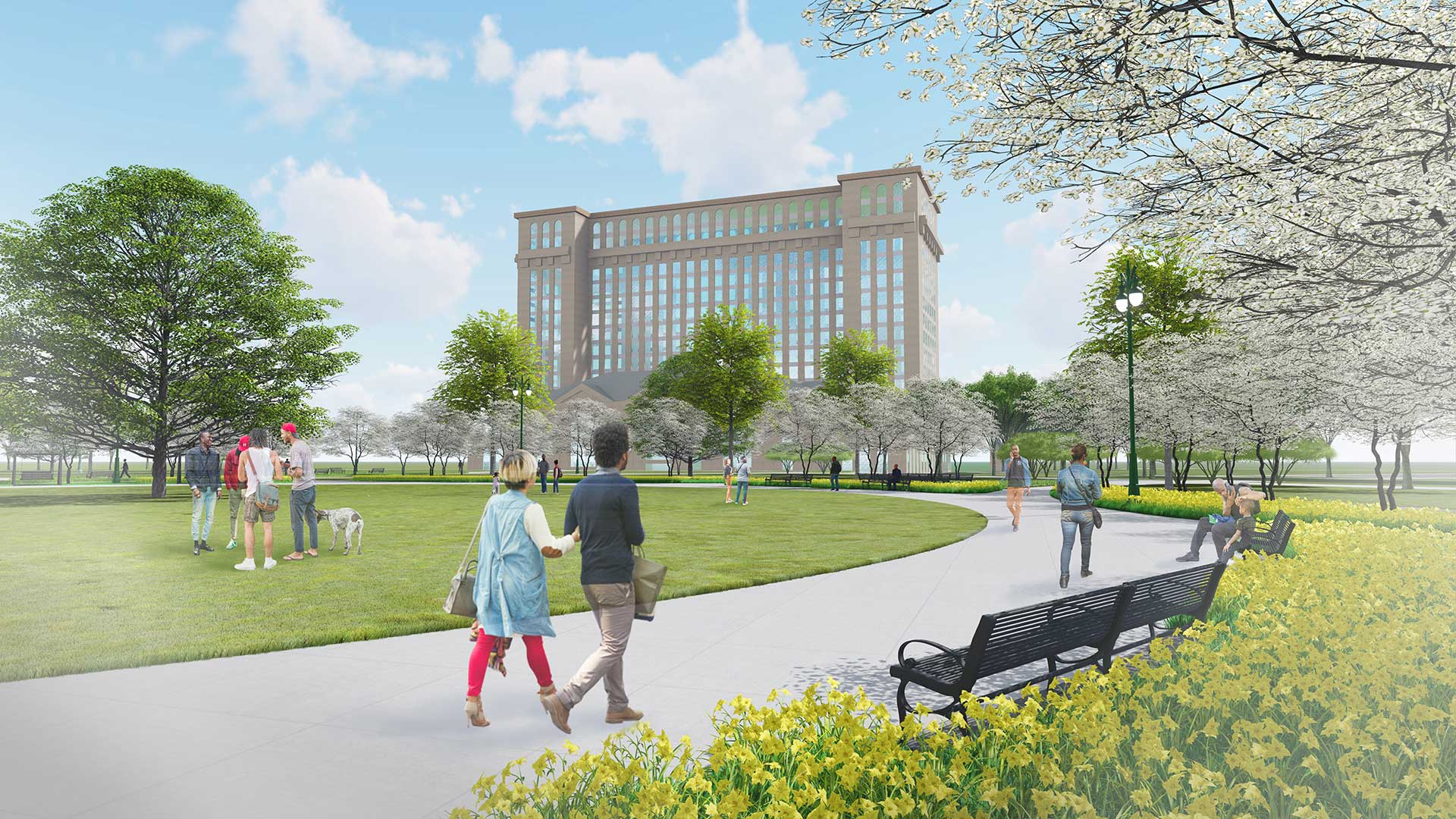
Marking the intersection of Detroit’s Corktown and Mexicantown neighborhoods, Roosevelt Park was originally designed by Daniel H. Burnham and Edward H. Bennett, both champions of the City Beautiful Movement, with the final design overseen by the City Plan Commission. After years of delays, construction work on the park, envisioned as a sweeping and lushly landscaped entrance to Michigan Central Station, commenced in 1919.
Just as the original design of Roosevelt Park was meant to complement Michigan Central Station, an enduring Beaux-Arts landmark inaugurated in 1914, the same goes for the design of the park in its newest iteration. The iconic erstwhile rail hub has famously been through a lot over the years and beginning in the late 1980s entered its prolonged “ruin porn” phase as one of the city’s most visible—and also most tragic—forsaken structures. Following myriad failed attempts to revive and reuse the building, Ford acquired the long-abandoned structure in 2018 with plans to revive it as the mixed-use centerpiece of its Michigan Central redevelopment plan.
Led by Ford in collaboration with project designer and planner Practice for Urbanism and Architecture (PAU), the ambitious 30-acre scheme breathes new life into the area around Michigan Central Station while fusing together the North Corktown, Mexicantown, and Hubbard Richard neighborhoods to create a single walkable community—a so-called Mobility Innovation District–via a series of plazas, parks, improved streets, and a first-of-its-kind 7-acre mobility platform with shared pedestrian and biking paths located atop a set of disused elevated train tracks behind the station.
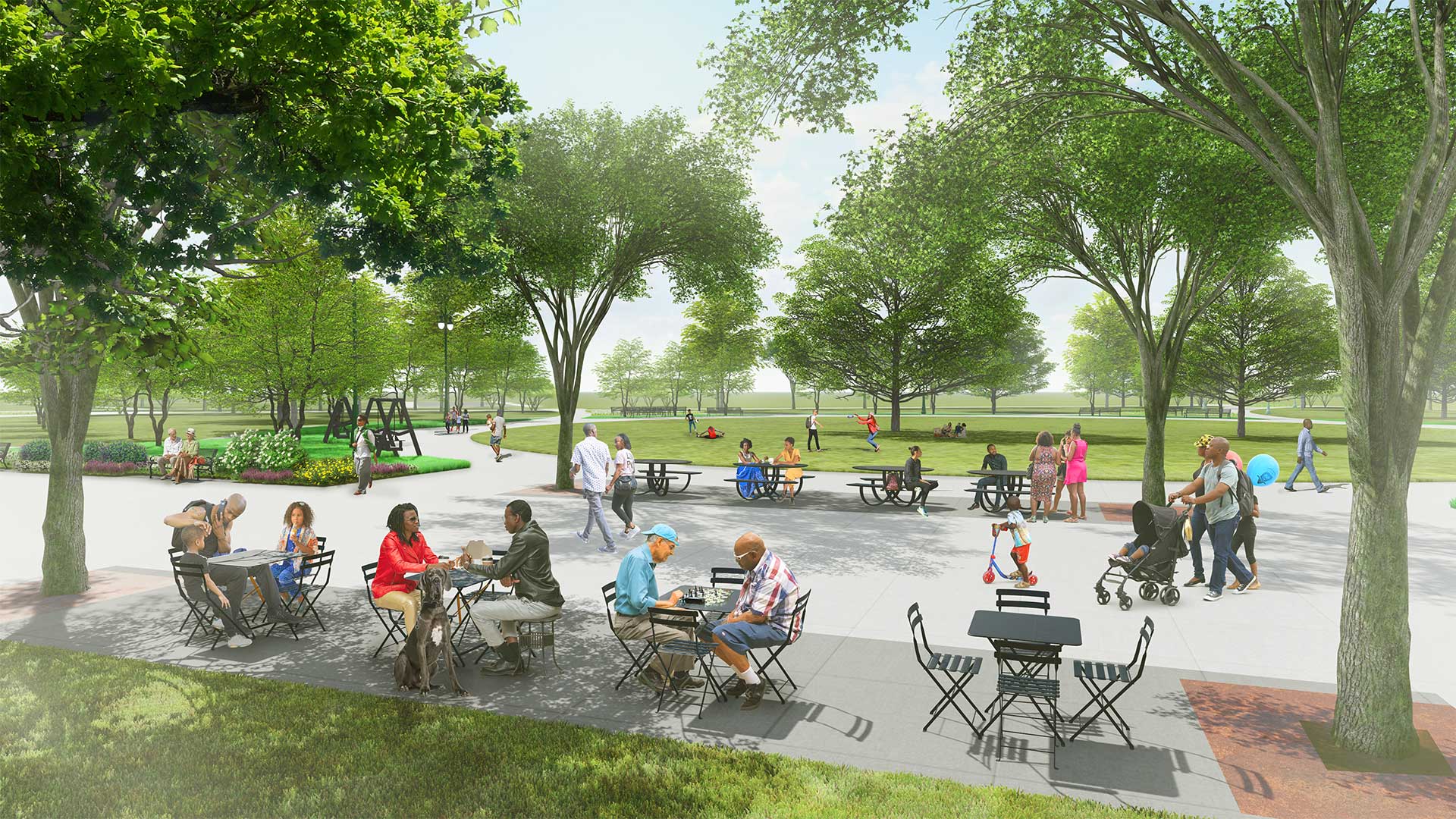
(Separate from the city-led renovation of Roosevelt Park, the eponymous Boston studio of landscape architect Mikyoung Kim, which earlier this month received the prestigious Firm of the Year Award from the American Society of Landscape Architects, is designing the various public space elements of Michigan Central in collaboration with with Detroit-based livingLAB )
The final phase of restoration work at Michigan Central Station kicked off last summer, and tenants are slated to move in by the first or second quarter of next year at around the same time work at Roosevelt Park wraps up.
“Roosevelt Park and Michigan Central Station have long been partners in civic grandeur and will be once again with this investment,” said Joshua Sirefman, CEO of Michigan Central, in a statement. “Together, they root us in both the rich heritage and bright future of the surrounding neighborhoods and all of Detroit. The restored Roosevelt Park, with its beautiful boulevard in the middle, and the grand public space in The Station will create a seamless blend of respite and connection.”
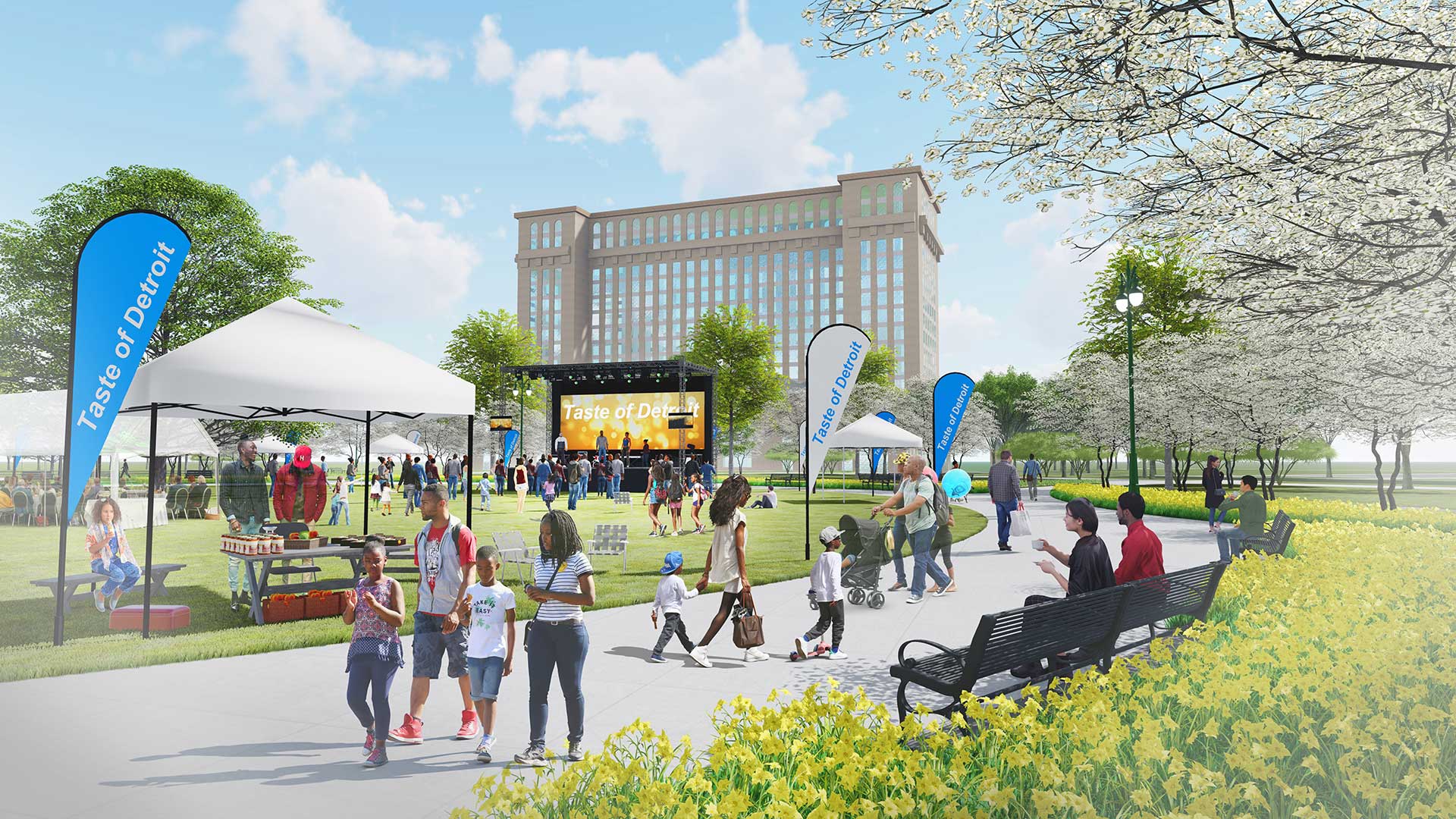
In addition to the removal of Vernor Road, work at Roosevelt Park includes creating new event lawns, benches and tables for seating, public plazas, a new pedestrian gateway entrance at Michigan Avenue, and a wide promenade serving as a direct connection between Michigan Avenue and the reborn Michigan Central Station. As noted in the press announcement, the “newly-unified park will serve as an amenity, not only for southwest Detroit residents but also for the 5,000 workers who will be employed at Michigan Central.” The city has yet to announce any type of public programming plan for the park, which would be key in activating the refreshed and reconfigured space. However, design renderings depict the park as a natural spot for large-scale events.
Previous plans to remake the park that never reached fruition have included a world-class skate plaza and a rippling landscape envisioned by Assembly Design Studio.
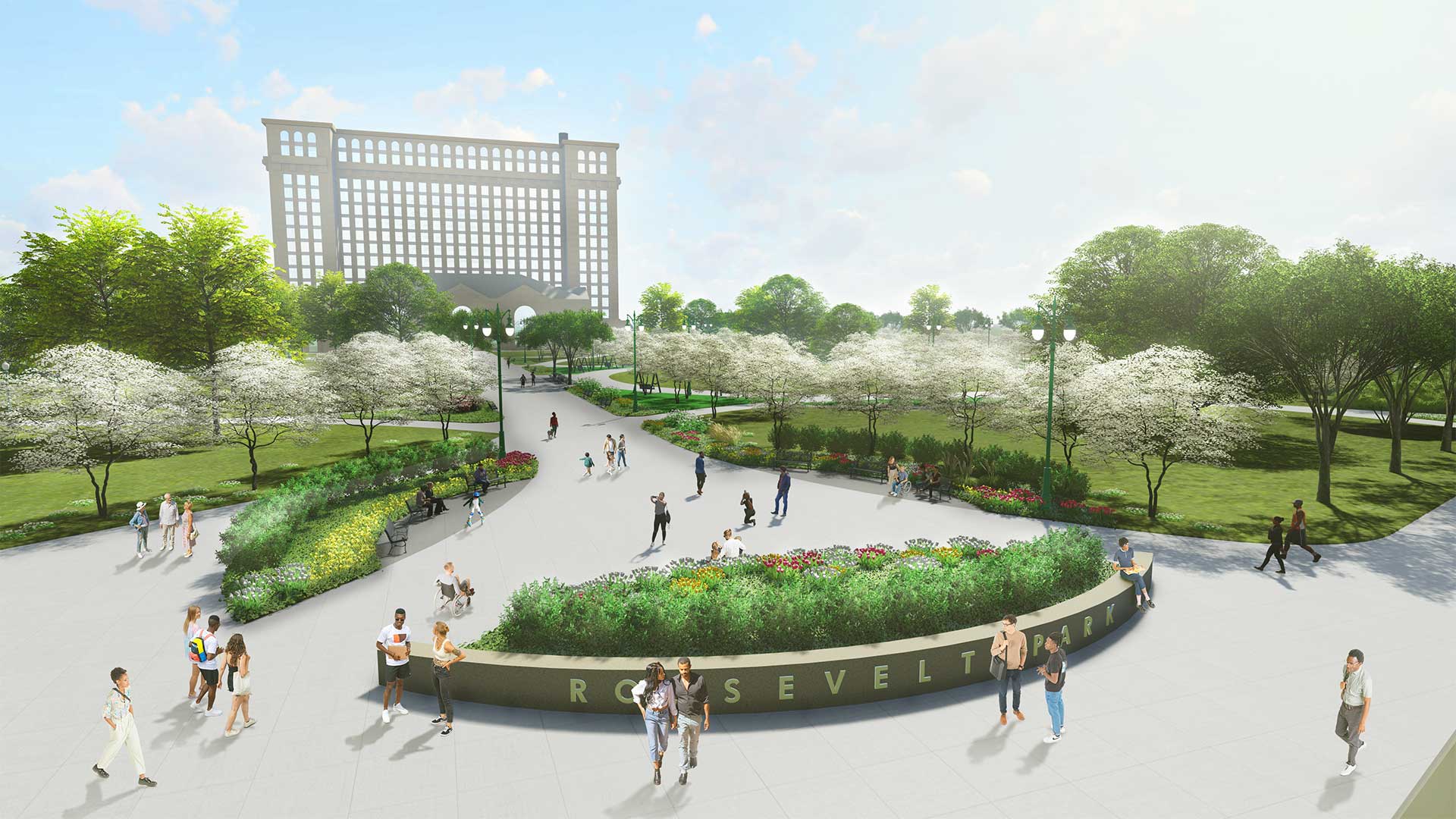
The current park revamp was heavily informed by a robust series of community engagement sessions that first kicked off last summer. “Roosevelt Park is in a great location but has been under-utilized,” said Brad Dick, Group Executive, Services & Infrastructure, with the City of Detroit. “Thanks to the input and ideas we received from residents and other stakeholders, we’re able to create something truly special that everyone can enjoy.”
While any type of work to enhance the chronically overlooked Roosevelt Park is much needed, some Detroiters don’t think the renovation plan goes far enough in terms of what it will offer. “There needs to be a large reflecting pond and fountain jets, and a major sculpture like a Calder, perhaps…something of greater interest,” wrote one commenter at Urbanize Detroit. “This plan is sadly just ‘good enough’ for Detroit, and lacks in imagination.” Another wrote that “having a more specific goal or purpose or function would help me to know why I was going there.”

